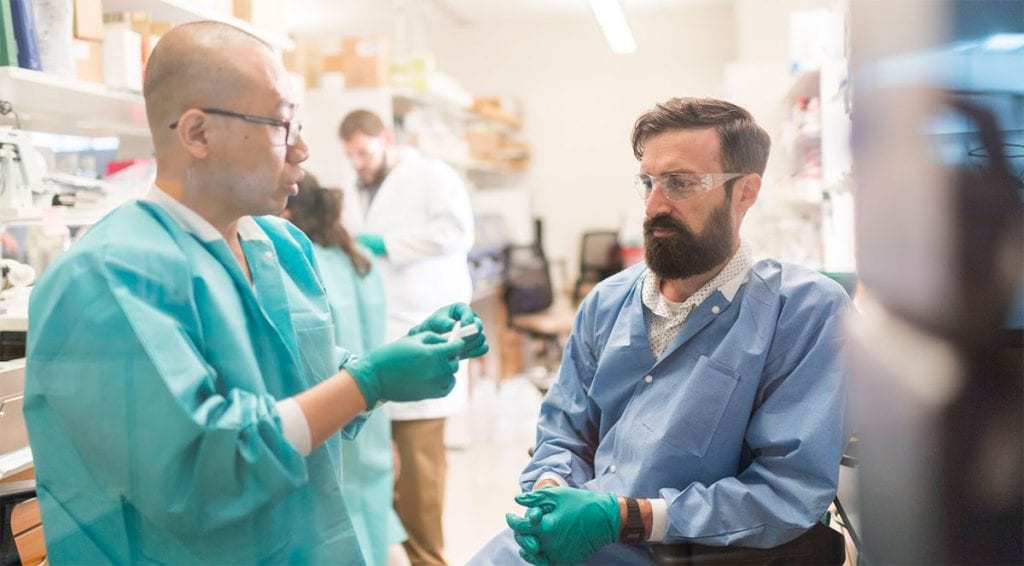20 Feb Thomson Lab looks to make major health impact with artery engineering project

Researchers at Thomson Labs
People suffering from a wide range of health problems need vascular transplants — replacing damaged arteries and veins. Cardiovascular disease accounts for one in every three deaths each year in the United States, more than all forms of cancer combined.
At the Morgridge Institute, stem cell pioneer James Thomson is leading a potentially transformational project to develop a safe and functional cell-based artificial artery that could be pulled from medical inventories and used by vascular surgeons.
“People with diabetes and sclerosis frequently suffer from blockage in the main arteries in their legs, a debilitating condition that often leads to amputation and even death,” says Thomson. “So far, we have used artificial grafts made of synthetic materials. But as the grafts get smaller and smaller, they fail at a higher and higher rate. And for smaller arteries like in the heart, they aren’t used at all.”
Producing arteries in the lab requires two essential cell types: endothelial cells, which line the interior of blood vessels, and smooth muscle cells from pluripotent stem cells, Thomson says. In 2017, the Thomson Lab was able to generate and characterize endothelial cells. Now, its latest research focuses on the smooth muscle cells. Healthy smooth muscle cells need the ability to contract so they can distribute blood throughout the body and regulate blood pressure.
The lab is developing scaffolds from natural and synthetic materials to provide structure and shape for the artery. UW–Madison biomedical engineer Naomi Chesler is working on a bioreactor that provides an environment in which the arterial cells can grow around the scaffolding.



